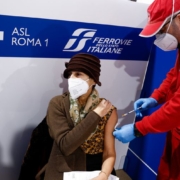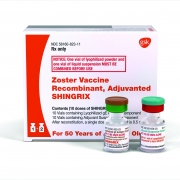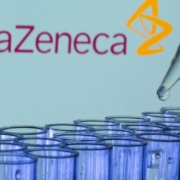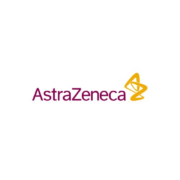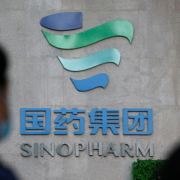AstraZeneca sees 6% revenue growth in 2023 despite plummeting COVID-19 sales
AstraZeneca sees 6% revenue growth in 2023 despite plummeting COVID-19 sales
AstraZeneca on Thursday released its fourth-quarter and full-year financial results, touting 6% total revenue growth for 2023 even as its COVID-19 business plummeted by more than 90%.
For the year, the pharma’s total revenue came in at $45.81 billion, representing a 6% year-over-year increase at constant exchange rates. Its fourth-quarter performance was likewise strong, with an 8% revenue growth versus the same period the prior year.
The Anglo-Swedish multinational owes its strong 2023 performance to its oncology, rare disease and cardiovascular, renal and metabolism (CVRM) businesses, which generated double-digit revenue growth more than offsetting the decline in its vaccine and immune therapies (V&I) franchise.
AstraZeneca’s best-selling asset in 2023 was Farxiga (dapagliflozin), indicated for chronic kidney disease, heart failure and type 2 diabetes. It brought in $5.96 billion, a 39% increase from the year before at constant exchange rates. Tagrisso (osimertinib), approved for certain kinds of non-small cell lung cancers (NSCLC), was also a top-performing product, raking in nearly $5.8 billion in 2023—representing 9% year-over-year growth.
AstraZeneca’s oncology unit generated nearly $17.15 billion in 2023, led by Tagrisso as well as other cancer heavy-hitters, including the PD-L1 blocker Imfinzi (durvalumab) and the PARP inhibitor Lynparza (olaparib). Meanwhile, its Farxiga-dominant CVRM unit brought in nearly $10.59 billion.
A strong contributor to AstraZeneca’s revenues was also its rare disease business, which in 2023 secured a little more than $7.76 billion—a 12% increase from the prior year. Soliris (eculizumab), indicated for paroxysmal nocturnal hemoglobinuria and neuromyelitis optica spectrum disorder (NMOSD), among others, captured nearly $3.15 billion, while its generalized myasthenia gravis therapy Ultomiris (ravulizumab) brought in almost $2.97 billion.
At the same time, the company on Thursday announced cuts to its metabolic, rare disease and oncology pipelines, including axing the IL-33 drug development program in diabetic kidney disease based on Phase IIb data for Farxiga in combination with tozorakimab.
“As AstraZeneca celebrates its 25th anniversary, we are pleased to report another year of strong financial performance and scientific progress, with double-digit earnings growth and investment in exciting areas of science, including antibody drug conjugates and cell therapies, that lay the foundations for long-term success,” CEO Pascal Soriot said in a statement.
Looking forward to 2024, AstraZeneca forecasts an increase in total revenue by low double-digits to a low-teens percentage.
Potentially helping the company fulfill this forecast are key pipeline milestones this year, including a regulatory decision for the first-line use of Tagrisso for EGFR-mutated NSCLC in the first half of 2024. The FDA is also set to release its verdict for the neoadjuvant use of Imfinzi in NSCLC, as well as the use of Ultomiris in NMOSD.
AstraZeneca is also pinning its hopes on Beyfortus (nirsevimab), its preventive antibody for respiratory syncytial virus, which was approved in July 2023 for children aged up to 24 months. Since its launch, Beyfortus has brought in $106 million, with the potential of raking in even more sales following a December 2023 commitment from AstraZeneca to bump up its supply.
Tristan Manalac is an independent science writer based in Metro Manila, Philippines. Reach out to him on LinkedIn or email him at [email protected] or [email protected].
Source: BioSpace


